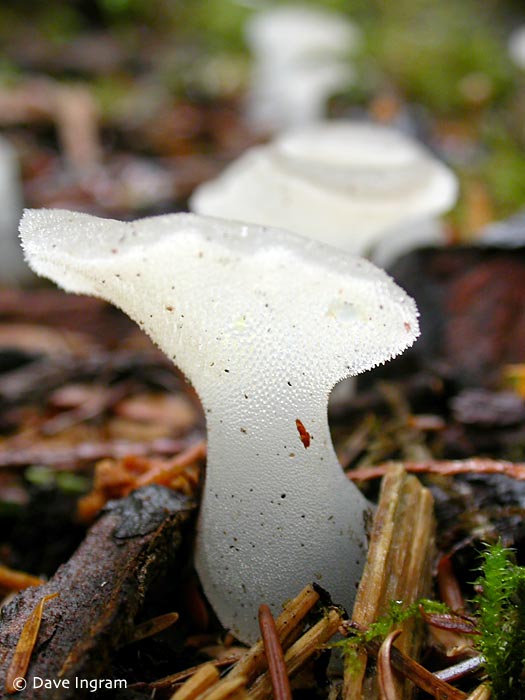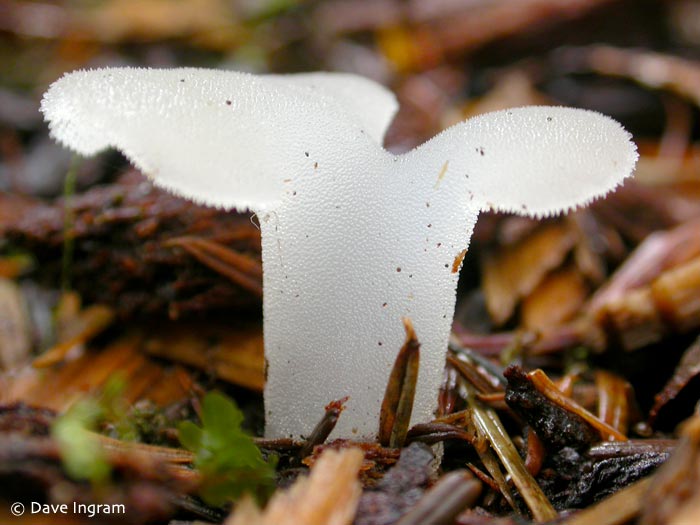One of the bonuses of doing a bird count is that you often end up in places that you haven’t been before. Such was the case yesterday when I was scouting out Seal Bay Regional Park which is in my assigned count area. I usually access Seal Bay from the main parking lot on Bates Road but in this case I was checking out a trail head on Hardy Road.
There wasn’t much bird activity at this end of the park and quite honestly there never really is much in the park itself in the winter time. However, while taking a quick walk on the trail I noticed a beautiful, small white fungus – the Toothed Jelly Fungus (Pseudohydnum gelatinosum).
Toothed Jelly Fungus

I’ve seen this small white fungus often in my walks in the woods. Its colour is distinctive as is its texture – rubbery with tooth-like projections on its underside. The teeth are what gives it its Latin name Pseudohydnum (false-toothed fungus) as the spines look like those of the teeth fungi (Hydnaceae). The species name gelatinosum refers to the gelatinous texture of the flesh of this fungus.
The Toothed Jelly Fungus often grows in dark, damp places in association with Douglas Fir. It varies in shape from tongue-like to spoon-like to fan-like. The specimens that I’ve found have been fairly small but they range in size from 1 to 6 cm broad across the cap. On the West Coast they often have a well developed stalk while those in eastern North America tend to have little or no stalk.
Challenging to Photograph

While I’ve seen this fungus often, I’ve struggled to get a photograph of it – its tendency to grow in places with poor light make it a challenge. A flash washes out the detail of the white translucent flesh and if I’m walking with family or in poor weather using a tripod is not always an option. I think that I may return to Seal Bay with a tripod this week if the weather improves to get better images.
But is the Toothed Jelly Fungus Edible?
According to Arora, this fungus is edible: “It is said to be fairly good with honey and cream – but what isn’t? It can also be marinated for use in salads. The texture is interesting, the flavor nonexistant.”
As always, I encourage you to be absolutely sure of the identify of any mushroom before eating it!
Interested in visiting Seal Bay Regional Park? Use the Google Map below for directions to the Hardy Road entrance.
Hardy Road, Comox, BC